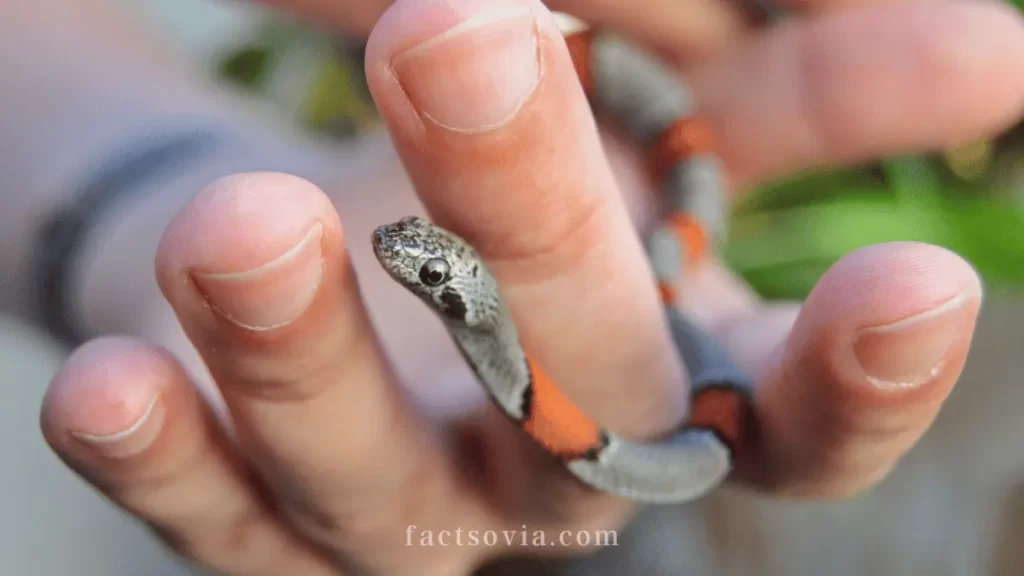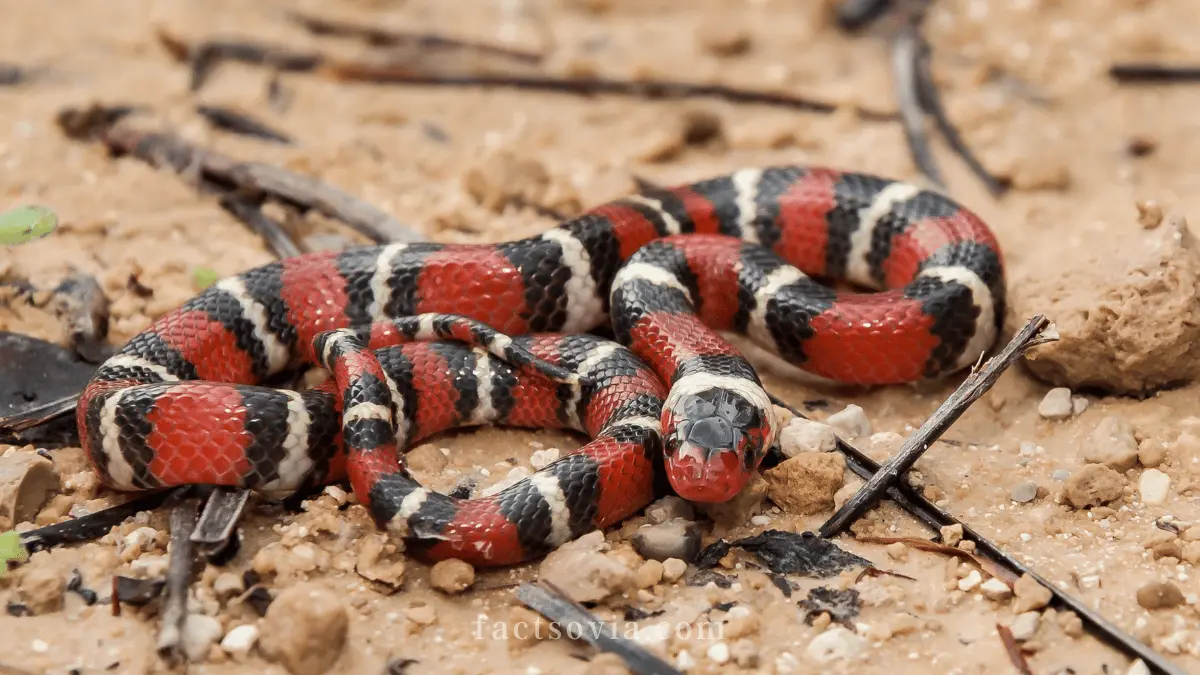We use affiliate links to run our site. When you buy through links on our site, we may earn an affiliate commission, without any added cost to you. Learn more
King snakes are one of the most fascinating and diverse groups of snakes on the planet. With over 30 different species, they can be found in a wide variety of habitats throughout the Americas. But what makes king snakes so truly unique is their diet.
From venomous rattlesnakes to elusive lizards, king snakes will eat just about any small vertebrate they can overpower. This makes them one of the most successful predators in the snake world.
In this post, we’ll explore the fascinating world of king snake dining. We’ll learn what they eat in the wild and in captivity, and how their unique adaptations have made them such successful hunters.
Types of King Snakes:
King snakes can be found all throughout the Americas in many different habitats. There are over 30 different species, with some of the most popular being:
- Eastern king snake
- California king snake
- Scarlet king snake
- Speckled king snake
They are called “king” snakes because they eat other snakes, even venomous ones like rattlesnakes! They hunt by sensing prey’s body heat and movements. Once caught, they kill prey by constriction. Let’s look closer at what they like to eat.
Really Interesting Snake Facts:
King Snakes in the Wild
In their natural habitats, king snakes are opportunistic predators that eat a varied diet. Their main prey items include:
- Rodents – King snakes are rodent specialists and mice, rats, voles, and other small mammals make up the bulk of their diet. They hunt rodents in burrows and nests.
- Lizards – Larger king snake species will also prey on lizards such as skinks, whiptails, and geckos. Some kingsnakes even specialize in hunting venomous lizard species like Gila monsters.
- Snakes – King snakes get their common name from their propensity to eat other snakes, including venomous species like rattlesnakes and copperheads. Their immunity to venom allows them to safely hunt, kill, and consume these dangerous prey items.
- Birds and eggs – Smaller bird species and eggs may also be taken occasionally by large king snake species.
- Amphibians – Frogs, salamanders, and other amphibians are preyed upon depending on availability.
The specific types of prey consumed depend on the king snake species and habitat. Kingsnakes have catholic diets and consume whichever appropriately-sized vertebrate prey they encounter. They locate prey using chemical cues and dispatch their prey via constriction.
Feeding Patterns of King Snakes by Age

As with many animal species, the dietary preferences and patterns of king snakes can vary significantly depending on their age and developmental stage. King snakes, which are renowned for their adaptability and broad diet, exhibit distinct feeding behaviors during different stages of their lives.
1. Juvenile King Snakes
Juvenile king snakes are typically the most voracious eaters among their age groups. This ravenous appetite is crucial for their rapid growth and development. Several key characteristics define the feeding patterns of juvenile king snakes:
- Frequency of Feeding: Juvenile king snakes have high metabolic rates and expend considerable energy in their growth process. As a result, they often feed more frequently than their adult counterparts. It’s not uncommon for juvenile king snakes to consume prey every five to seven days.
- Prey Size: These young snakes primarily target smaller prey items due to their smaller size and limited hunting abilities. Common prey include neonate rodents, small lizards, and young birds. Juvenile king snakes have a remarkable ability to overpower prey that is nearly their own size.
- Ambush Predators: Juvenile king snakes often employ ambush tactics to catch their prey. They patiently wait for potential meals to come within striking distance, relying on their cryptic coloration and stealth.
- Growth Phase: This stage is characterized by rapid growth, and feeding serves as a critical component of development. Consistent and successful feeding during this period ensures that they reach adulthood quickly.
2. Adult King Snakes
Adult king snakes have different dietary needs and feeding patterns compared to juveniles. As they reach maturity, their behaviors and preferences evolve:
- Feeding Frequency: Adult king snakes tend to feed less frequently than juveniles. They may consume prey every 10 to 14 days or even longer, depending on factors such as temperature and individual metabolism.
- Prey Range: With their increased size and strength, adult king snakes have a broader range of potential prey. They can tackle larger rodents, birds, and reptiles. Some may even prey upon other snake species, including venomous snakes, thanks to their immunity to snake venom.
- Hunting Strategies: Adult king snakes often adopt more active hunting strategies. They actively forage and may cover larger territories in search of prey. Unlike juveniles, they are less reliant on ambush tactics.
- Energy Conservation: Adult king snakes are more focused on conserving energy between meals. They have developed the ability to go for extended periods without feeding, allowing them to endure scarcity of prey in their natural habitat.
3. Geriatric King Snakes
Geriatric king snakes, like all organisms, undergo physiological changes as they age. Their feeding patterns are influenced by the challenges associated with advancing years:
- Reduced Activity: As king snakes age, they tend to become less active. Their movements slow down, and they may not actively seek out prey as they once did.
- Decreased Appetite: Geriatric king snakes often experience a reduced appetite. They may eat less frequently, with longer intervals between meals.
- Digestive Issues: Older king snakes may also encounter digestive difficulties, making it important to provide easily digestible prey items. Prey with softer bones and smaller size may be preferred.
- Care Considerations: Owners of geriatric king snakes should be attentive to their unique dietary needs, ensuring they receive appropriate care, dietary supplements, and a comfortable environment to support their well-being in their later years.
Feeding Pet King Snakes

In captivity, pet king snakes can be fed a maintenance diet of pre-killed rodents purchased from pet stores or online frozen feeder suppliers. The most appropriate prey items include:
- Pinky mice for hatchlings and small juveniles
- Adult mice for subadults and small adult king snakes
- Small rats for large adults
- Quail eggs or chicks for exceptionally large king snake species
Hatchling king snakes should be started on pinky mice no larger than the width of the snake’s head. Food items can gradually be increased in size as the snake grows. Adults are typically fed adult mice or rat pups sized to leave a small bulge in the snake after swallowing.
Pet king snakes do not need to be fed other snakes or lizards. Their nutritional needs can be fully met with properly-sized rodents. Use the following feeding guidelines:
- Hatchlings: 1 pinky mouse every 5-7 days
- Juveniles: 1 adult mouse every 7 days
- Adult males: 1 adult mouse every 10-14 days
- Adult females: 1-2 adult mice every 14 days
It is important to feed pet king snakes prey items that have been fully thawed and heated to above room temperature. Live prey can injure snakes and is not recommended. Provide a bowl of fresh water at all times.
Healthy Diets for King Snakes
Both wild and captive king snakes thrive on diets high in protein and fat. Rodents, eggs, lizards, and other whole prey provide complete nutrition. Variety is beneficial but not essential. Occasionally supplementing feeder rodents with calcium and vitamins can help balance king snake diets.
Avoid overfeeding pet king snakes, as obesity can cause health issues. Ideal feeding amounts will keep snakes looking lean and muscular. Adjust quantities based on the individual snake’s condition.
Providing proper nutrition is key to keeping king snakes active and healthy. By feeding them appropriate prey items in suitable amounts, these snakes can live 15-25 years or more in captivity. Their voracious appetites and blatant disregard for prey toxicity make king snakes fascinating animals to maintain.
Final Thought:
King snakes are truly remarkable creatures. Their diverse diets, immunity to venom, and versatile hunting behaviors make them one of the most successful predators in the snake world.
If you’re fascinated by snakes, or simply curious about what these amazing creatures eat, then I encourage you to share this post and explore more of our articles on this topic.
And finally, if you’re inspired by the king snake’s hunting prowess, consider taking action to learn more about snakes and their role in our ecosystems. You can volunteer with a local snake conservation organization, or simply educate yourself and others about the importance of these misunderstood creatures.
Do king snakes eat rattlers?
Yes, king snakes are known to eat rattlesnakes. In fact, they are one of the few predators that are immune to rattlesnake venom. King snakes are able to kill and eat rattlesnakes by constricting them.
What snakes do king snakes eat?
King snakes eat a variety of snakes, including venomous snakes such as rattlesnakes and copperheads. They also eat non-venomous snakes such as garter snakes and water snakes.
What are the dangers of feeding a king snake live food?
There are several dangers associated with feeding a king snake live food, including:
Injury: Live prey can bite or scratch the snake, causing injury.
Infection: Live prey can carry diseases that can be transmitted to the snake.
Parasites: Live prey can carry parasites that can infect the snake.
Regurgitation: If the snake is not able to properly digest its live food, it may regurgitate it, which can lead to other health problems.
sources:
Amazon and the Amazon logo are trademarks of Amazon.com, Inc, or its affiliates.
